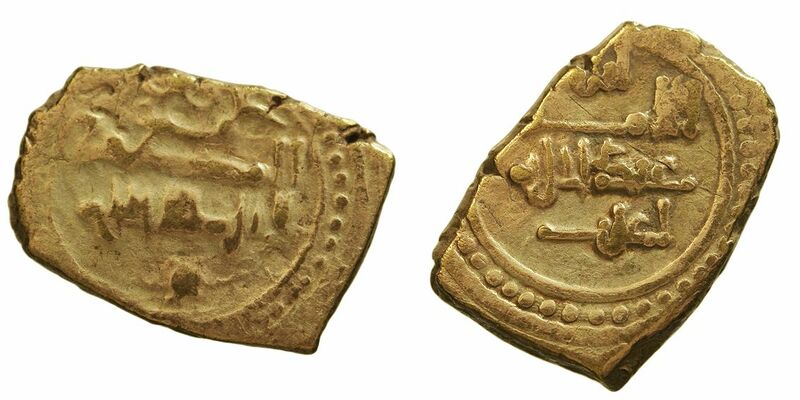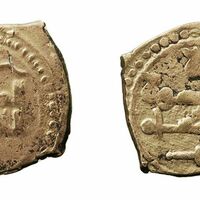Taifa kingdom coins
Type:
Coins
Date:
Mid-eleventh century
Location or Findspot (Modern-Day Country):
Spain
Medium:
Electrum
Description:
The taifas were small, independent Islamic territories (generally emirates) in al-Andalus that formed after the collapse of the Umayyad Caliphate of Córdoba in 1031. The taifas were much weaker than the former Umayyad Caliphate, and they began making tribute payments to the Christian rulers of the northern Iberian Peninsula. The coins reproduced here are dinars of two emirs (rulers) of different taifas: al-Ma'mun, ruler of the Taifa of Toledo from 1043–75; and 'Abd al-Malik al-Muzaffar, ruler of the Taifa of Valencia from 1061-65. These two emirs were part of a turbulent history that was characteristic of the period.
In 1062, Ferdinand I of León and Castile invaded Toledo with a large army, and al-Ma'mun pledged his allegiance to the Christian ruler. In 1065, Ferdinand launched a campaign against Valencia. Al-Ma'mun sent his own forces to support his son-in-law, 'Abd al-Malik of Valencia, even though he was in a tributary relationship with Ferdinand I. After Ferdinand fell ill and cancelled the campaign, al-Ma'mun dethroned 'Abd al-Malik and took Valencia for himself.
In 1062, Ferdinand I of León and Castile invaded Toledo with a large army, and al-Ma'mun pledged his allegiance to the Christian ruler. In 1065, Ferdinand launched a campaign against Valencia. Al-Ma'mun sent his own forces to support his son-in-law, 'Abd al-Malik of Valencia, even though he was in a tributary relationship with Ferdinand I. After Ferdinand fell ill and cancelled the campaign, al-Ma'mun dethroned 'Abd al-Malik and took Valencia for himself.
Relevant Textbook Chapter(s):
6
Image Credits:
Wikimedia Commons
Tags:
Status and identity,
Arabic,
Coins,
Islamic,
War,
Western European,
Mediterranean,
Metalwork,
Islamicate


